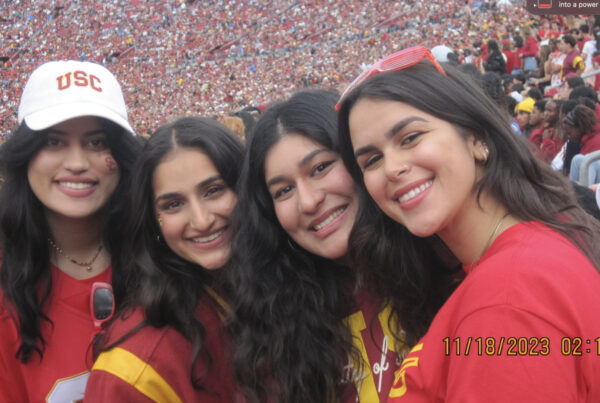Over fall break, I had the opportunity to travel with 7 other Viterbi students to Atlanta, GA for the National Action Council for Minorities in Engineering annual conference. For a majority of the conference, we split into two teams and participated in a hackathon.
The goal of the hackathon was to prototype a solution to one of four “wicked problems”, artificial intelligence, the environment, healthcare, and community safety. We were put in the environment group and given 24 hours until we had to present to a panel of judges. We also took part in a social media challenge to promote the hackathon, so everything is well documented. In this blog, I’m going to take you through our 24-hour hackathon with pictures from our team Instagram (@mcsquarednacme).
9am-12pm: Brainstorming:
 Helping the environment is a very broad problem with many different avenues of solutions. Our team had to first decide what aspect of the environment we wanted our solution to address. This was a long process filled with us jotting down notes and ideas of a whiteboard and Post-it notes, as well as filling out empathy maps for potential users of our solution. We also needed to create a problem statement for our solution.
Helping the environment is a very broad problem with many different avenues of solutions. Our team had to first decide what aspect of the environment we wanted our solution to address. This was a long process filled with us jotting down notes and ideas of a whiteboard and Post-it notes, as well as filling out empathy maps for potential users of our solution. We also needed to create a problem statement for our solution.
We ultimately decided to create a website where businesses could be connected with grassroots organizations to provide them with more resources and support.
12pm-2pm: “Working” Lunch:
 After a couple of hours inside one room discussing our solution, we needed a break. Luckily, lunch was provided for all hackathon participants! We ate our sandwiches and took time to have a little fun, including playing games.
After a couple of hours inside one room discussing our solution, we needed a break. Luckily, lunch was provided for all hackathon participants! We ate our sandwiches and took time to have a little fun, including playing games.
We also met up with the other team from USC, who was also working on the environment. We made some Tik Toks and overall had some time to relax before we really started building our solution.
2-9pm: Grind Time!
 After lunch, we began working on the website, as well as fleshing out the other aspects of the solution, including our name, marketing strategy, and logistics. There were also many subject matter experts in areas of entrepreneurship and public speaking that were able to talk to our team and give us advice. Our team was made of mechanical engineers and computer science students. So while the computer scientists wrote the code for the site, the mechanical engineering majors worked on the business plan and presentation.
After lunch, we began working on the website, as well as fleshing out the other aspects of the solution, including our name, marketing strategy, and logistics. There were also many subject matter experts in areas of entrepreneurship and public speaking that were able to talk to our team and give us advice. Our team was made of mechanical engineers and computer science students. So while the computer scientists wrote the code for the site, the mechanical engineering majors worked on the business plan and presentation.

We also ate dinner and took some outdoor breaks during this time.
9pm-10:30: Presentation and Finishing Touches

For this hackathon, we needed to deliver a written submission by midnight and a 3 minute presentation the next day. Towards the end of the night, we were finishing up our written submission, which was basically our business plan, and delegating parts of our presentation. 3 minutes is not a long time, so we had to work to condense our over 12-hour day into that time frame. We turned in our submission and practiced our presentation, and decided we were ready to stop for the day.
11pm-7am: Sleep!
Sleep is always important!
9am: Final Presentation!
 After breakfast, and a few more run-throughs, it was time for our presentation. As expected, the 3 minutes sped by. But, it was so rewarding to present our work and finally be done with the hackathon!
After breakfast, and a few more run-throughs, it was time for our presentation. As expected, the 3 minutes sped by. But, it was so rewarding to present our work and finally be done with the hackathon!
Although we didn’t win anything (the other USC team did though!), the hackathon was an enriching experience where I got to practice rapid prototyping, teamwork, and problem solving. If you ever have the chance to participate in a hackathon-type event, I would definitely recommend it! USC has multiple different competitions throughout the year.
Bonus: Exploring Atlanta

After the conference was over, we went to downtown Atlanta to explore and eat. We ended up doing karaoke and walking around the World of Coca-cola. I loved my short stay in Atlanta and am grateful to be given this opportunity by Viterbi!




